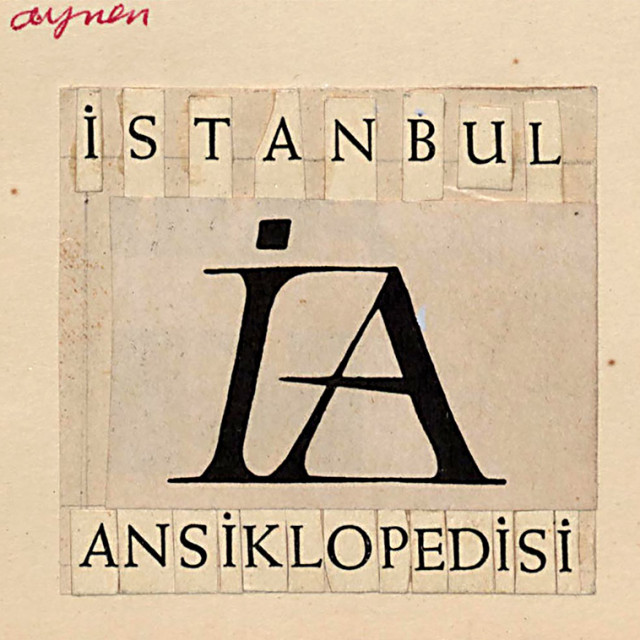No Further Records
Salt’s new exhibition “No Further Records” sheds light on the unpublished sections of “Istanbul Encyclopedia” to which historian and novelist Reşad Ekrem Koçu (1905-1975) devoted most of his life.
Founded by Garanti BBVA, Salt’s upcoming exhibition No Further Records: Reşad Ekrem Koçu and Istanbul Encyclopedia Archive opens on Wednesday, May 24 at Salt Galata. Organized as part of Reşad Ekrem Koçu and Istanbul Encyclopedia Archive, a joint project of Salt and Kadir Has University initiated in 2018, the exhibition sheds light on the unpublished sections of Istanbul Encyclopedia to which historian and novelist Reşad Ekrem Koçu (1905-1975) devoted most of his life.
The exhibition focuses on the articles that had remained in the design stage of the publishing effort, following the 11 volumes of the encyclopedia printed up to the letter “G” during Koçu’s lifetime. The archival materials comprise drafts for the articles, clippings, collages, and drawings, revealing the privileged position of Koçu in historiography as he had set out to manifest, in his own words, the “grand register” of Istanbul.
Spreading across Salt Galata, the exhibition takes the building’s location as an urban focal point, and presents a selection of materials in a framework shaped around the neighborhoods of Karaköy and Galata. It highlights the particular urban image that Koçu created about Galata, its immediate surroundings, and its inhabitants from the early 19th century to the mid-20th century. The “lowlives” who lived in the urban space surrounding the building in question for a century and those who existed outside the traditional neighborhood order of Istanbul are traced in the archive. The statement “no further records have been found” at the end of some of the articles exemplifies the point where one may go beyond official historiography; the exhibition No Further Records looks into the city of those with no other records.
In parallel with the exhibition, the printed volumes of Istanbul Encyclopedia and a collection of approximately 40,000 items have been digitized and will soon be accessible online. Offering a different perspective on 19th and 20th century Istanbul, the exhibition and the archive will be accompanied by an e-publication with contributions of researchers from diverse fields. Public programs accompanying the exhibition will be announced via saltonline.org and Salt’s social media channels.
The exhibition No Further Records is programmed by architectural historian Bülent Tanju, researcher Cansu Yapıcı, and Gülce Özkara (Programmer) and Masum Yıldız (Archivist) from Salt, in collaboration with Emirhan Altuner (Design and Production) and Kadir Has University. Artist Cem Dinlenmiş contributed to the exhibition with his illustrations inspired by the encyclopedia. The archival and research project of Salt and Kadir Has University was initiated in 2018 by Meriç Öner (Former Director of Salt Research and Programs) and architect-academician Arzu Erdem.
About Reşad Ekrem Koçu
Reşad Ekrem Koçu was born in Istanbul in 1905. He graduated from the Bursa High School in 1921 and the Istanbul University Faculty of Literature History Department in 1931. He was the student and assistant of Ahmed Refik Altınay, and when Altınay was removed from his position in 1933, as the university reform went into effect, Koçu resigned from the newly established university. He taught history at the Kuleli Military High School, Vefa High School, and Pertevniyal High School. In addition to his experience as a history teacher, he made a living by contributing articles to newspapers such as Cumhuriyet, Yeni Sabah, Milliyet, Hergün, Yeni Tanin, and Tercüman and magazines such as Hayat Tarih Mecmuası, Resimli Tarih Mecmuası, Tarih Dünyası, Hayat, Yeşilay, Büyük Doğu, Hafta, Türk Folklor Araştırmaları, and İstanbul Enstitüsü Mecmuası. He published historical novels and novelized monographs on historical characters. In November 1944, he began publishing the fascicles of Istanbul Encyclopedia, which he defined as the “grand register of the city,” focusing on historical, geographic, architectural, literary, folkloric, and cultural topics. He said of the encyclopedia: “As of now, I will squander my life on it,” and continued working on it until the end of his life. After 34 fascicles were published intermittently, he had to take a break in 1951 due to financial reasons. The encyclopedia was relaunched beginning with the first fascicle in 1958, and this adventure lasted 173 fascicles and 11 volumes. Ending on the Gökçınar article, the fascicle dated 1973 marked the end of the publishing life of Istanbul Encyclopedia. Koçu passed away two years later, on July 6, 1975, and was buried in the Sahrayıcedid Cemetery. The historian lost the mansion he inherited from his father, his money, and his physical and mental health to form Istanbul’s “grand register.” The location of his grave could never be determined.




 SALT GALATA, İSTANBUL
SALT GALATA, İSTANBUL 24 May 2023, 09:00 - 29 October 2023, 18:00
24 May 2023, 09:00 - 29 October 2023, 18:00